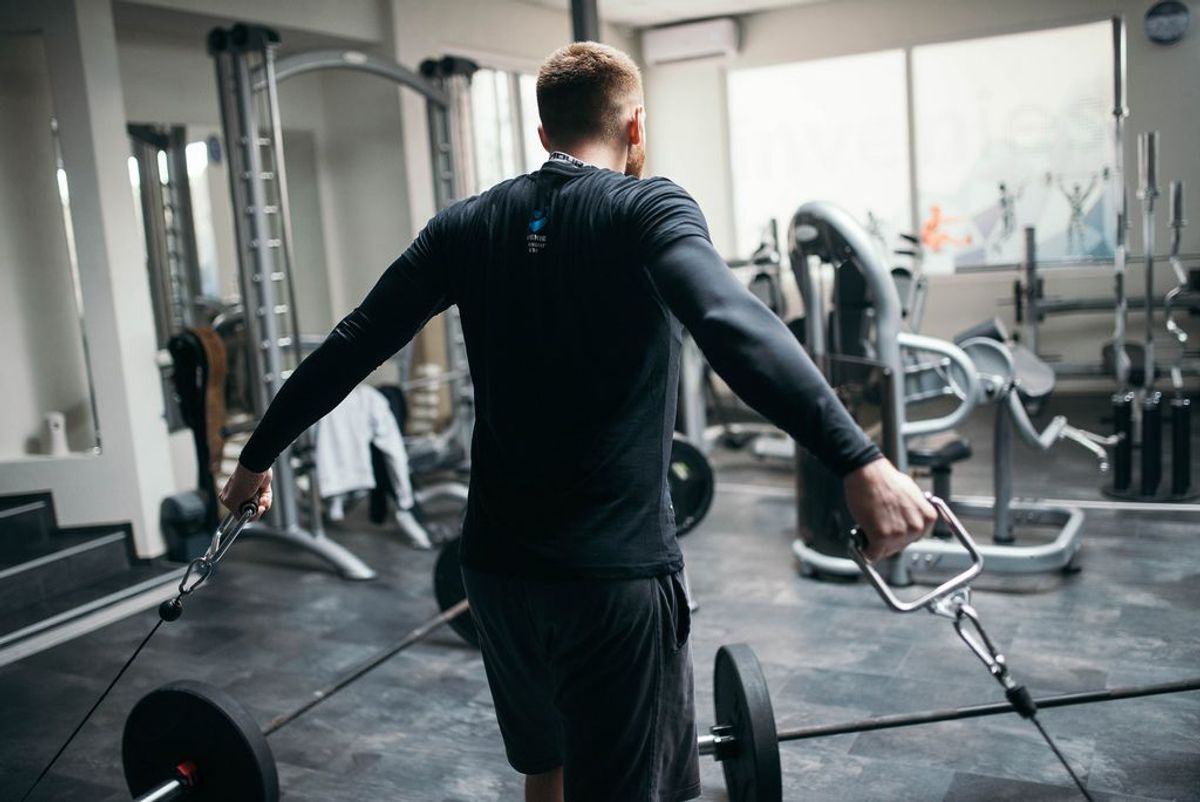
Rejuvenating Routines: How to Recover Optimal Muscle Strength Post-Gym Session
Chill Out: The Power of Cooling Down

Why Skipping the Cool Down is a No-No
Ever dashed out of the gym right after the last rep, skipping the cool down? Hold up! That's a shortcut you might regret. Cooling down is crucial because it helps regulate blood flow, preventing dizziness or the feeling that you might faint after an intense session.
Cooling down also gradually reduces your heart rate and can be key in reducing the buildup of lactic acid, which often leads to muscle soreness. Here's a quick rundown of why you shouldn't skip this step:
- Prevents blood pooling: Gradually lowers heart rate and helps blood return from your muscles to your heart.
- Reduces muscle stiffness: Gentle stretches post-workout can limit stiffness and improve flexibility.
- Mental transition: Eases the shift from intense activity to rest, giving you a moment of reflection and calm.
Remember, a proper cool down can be the difference between waking up ready for the next challenge or being too sore to get out of bed. Make it an integral part of your workout routine!
Stretch It Out: Post-Workout Stretches for Every Muscle Group
After you've powered through your last set, it's tempting to call it a day. But hold up—your muscles are just begging for a good stretch. Stretching post-workout is crucial for reducing muscle tension and may help in decreasing the risk of injury. Plus, it feels pretty darn good.
Flexibility isn't just for gymnasts; it's a key component of overall fitness. Here's a quick rundown of stretches to hit every major muscle group:
- Quads: Stand on one leg, pull your other foot to your bum, and hold.
- Hamstrings: Sit down, extend one leg out, and reach for your toes.
- Chest: Find a wall, place your palm on it, and gently turn away.
- Shoulders: Reach one arm across your body and lightly pull it closer with the other arm.
Remember, the goal isn't to feel pain. Stretch until there's mild tension, and then hold for about 15-30 seconds. No bouncing—keep it smooth and steady.
Mixing up your stretches can keep things interesting and ensure you're hitting all the angles. Listen to your body and give it the stretch-session it deserves after a workout. It's a little bit of self-care that goes a long way for recovery.
Mind Over Muscle: Relaxation Techniques That Speed Up Recovery
Ever noticed how your mind can be your biggest ally or your worst enemy when it comes to recovery? Mental relaxation is just as crucial as physical rest when it comes to rejuvenating those tired muscles. Techniques like meditation, deep breathing, and visualization can transform your recovery game.
Visualization, in particular, isn't just for the pros. Imagine your muscles healing and growing stronger with each breath you take. This mental practice can actually enhance the physical recovery process, making it a powerful tool in your post-gym routine.
- Meditation: Just 10 minutes can reduce stress and improve focus.
- Deep Breathing: Slows the heart rate and promotes calmness.
- Progressive Muscle Relaxation: Tense and release each muscle group for total relaxation.
Remember, recovery isn't a race. It's about giving your body the time and care it needs to bounce back stronger. Don't rush the process; embrace the stillness and let your body do its thing.
Fuel Up: Eating Your Way to Muscle Recovery

Protein Power: What to Eat to Rebuild Muscle
After you've crushed your workout, it's time to give your muscles the TLC they deserve. Protein is the building block of muscle repair, so chowing down on the right stuff is key. Think of your post-gym meal as the foundation for all those gains you're working towards.
Chicken, salmon, and eggs are your go-to muscle menders, packed with the essential amino acids your body is craving. But don't forget about plant power! Quinoa, beans, and tofu are fantastic for those who prefer a greener plate.
- Chicken breast: Lean and mean protein source
- Salmon: Omega-3s to reduce inflammation
- Eggs: Complete protein with all nine essential amino acids
- Quinoa: A plant-based protein champ
- Beans: Fiber and protein in a hearty package
- Tofu: Versatile and high in protein
Remember, it's not just what you eat, but how you eat it. Keep your meals balanced with a good mix of protein, carbs, and fats to maximize recovery.
Don't just scarf down your food; savor it, and let your body absorb all the goodness. And hey, if you're in a pinch, a quality protein shake can do the trick too. Just make sure to keep it real with the ingredients.
Timing is Everything: When to Eat Post-Workout
Nailing the timing of your post-workout meal is like hitting the sweet spot on a baseball bat—it can make all the difference in your recovery game. The golden rule? Aim to refuel within 45 minutes to an hour after your workout. This is when your muscles are most receptive to the nutrients you ingest, ready to start the repair process.
- Immediately post-workout: Rehydrate with water or an electrolyte drink.
- Within 20 minutes: Grab a small snack that includes carbs and protein.
- Within 45-60 minutes: Consume a well-balanced meal.
Remember, the sooner you can supply your muscles with the right nutrients, the better your recovery will be. This doesn't mean you should rush home and devour everything in sight, but rather plan ahead to have a nutritious snack or meal ready to go.
While the exact timing can vary based on individual needs and the intensity of the exercise, sticking to this window ensures that you're giving your body the fuel it needs to recover effectively. And don't forget, staying hydrated is just as crucial as what you eat—water plays a key role in transporting nutrients to your cells and flushing out toxins.
Hydration Nation: The Role of Water in Muscle Repair
Water isn't just for quenching thirst, folks. It's the MVP when it comes to muscle repair. After a grueling workout, your muscles are screaming for hydration to kickstart the recovery process. Water helps to flush out toxins, replenish fluids lost through sweat, and transport nutrients to those tired muscles.
Hydration isn't a one-size-fits-all deal, though. Depending on the intensity of your workout and your body size, your water needs can vary. Here's a quick rundown to keep you on track:
- Drink 17-20 ounces of water 2-3 hours before exercising.
- Sip 8 ounces of water 20-30 minutes before you start.
- During your workout, aim for 7-10 ounces every 10-20 minutes.
- Post-workout, guzzle down 16-24 ounces for every pound lost.
Remember, if you're waiting to drink until you're thirsty, you're already behind the eight ball. Stay ahead of the game and keep sipping!
And don't forget, not all drinks are created equal. While sports drinks can replenish electrolytes, they often come with added sugars. Water is the purest form of hydration and should be your go-to. So next time you hit the gym, make sure your water bottle is just as essential as your gym towel.
Catch Those Zzz's: Sleep's Role in Muscle Recovery

Dreaming of Gains: How Sleep Boosts Muscle Repair
Ever wondered why you feel like a superhero after a solid night's sleep? That's because sleep is the unsung hero of muscle recovery. When you're snoozing, your body goes into overdrive repairing the microscopic tears in your muscles from that killer workout. Growth hormone levels spike, and that's the stuff that's rebuilding your biceps while you're dreaming about lifting cars.
Sleep isn't just about quantity, though. Quality matters too. Here's a quick rundown of what your body's doing while you're off in dreamland:
- Deep Sleep: Your body's repair workshop. This is when the magic happens.
- REM Sleep: Memory consolidation central, but also important for cognitive function and mood.
- Light Sleep: The transition phase, not as restorative, but still important.
Remember, a consistent sleep schedule is like a secret weapon for muscle recovery. It's not just about clocking in hours; it's about getting into a rhythm that your body can rely on.
So, if you're skimping on shut-eye, you're not just cranky—you're compromising your gains. Make sleep a priority, and your muscles will thank you with strength and resilience. And hey, who doesn't love an excuse for a guilt-free early bedtime?
Creating a Sleep Sanctuary for Optimal Recovery
Transforming your bedroom into a sleep sanctuary is more than just a luxury—it's a necessity for muscle recovery. A tranquil environment can significantly enhance the quality of your sleep, ensuring your muscles get the rest they need to repair and grow stronger. Start with the basics: a comfortable mattress and pillows that support your body's natural alignment.
Temperature plays a crucial role in sleep quality. Aim for a cool, but not cold, room temperature. A range of 60-67 degrees Fahrenheit is often recommended for the best sleep. Here's a quick checklist to optimize your sleep environment:
- Blackout curtains to block out light
- White noise machine or earplugs to reduce sound disturbances
- Aromatherapy diffuser with lavender or chamomile to promote relaxation
Remember, electronic devices are the arch-enemies of sleep. Banish screens from your bedroom at least an hour before bedtime to prevent blue light from disrupting your sleep cycle.
Creating a routine that signals to your body it's time to wind down is also key. Whether it's reading a book, meditating, or gentle stretching, find what works for you and stick to it. Your muscles—and your mind—will thank you for the restorative rest.
Nap Time? The Pros and Cons of Post-Workout Naps
Ever thought about hitting the hay after hitting the gym? You're not alone. A quick snooze post-exercise can be tempting, especially when you're feeling wiped out. But is it beneficial? Napping after a workout can indeed be a double-edged sword.
On one hand, a short nap can reduce fatigue, improve mood, and sharpen mental focus. It's like a mini reset for your body and mind, giving you a second wind for the rest of the day. On the other hand, snoozing for too long can mess with your nighttime sleep patterns, potentially leaving you more tired than before.
Here's a quick rundown of the pros and cons:
-
Pros:
- Reduces fatigue
- Boosts mood
- Enhances alertness
-
Cons:
- Can disrupt nighttime sleep
- May lead to sleep inertia if too long
- Could interfere with post-workout nutrition timing
Remember, the key is moderation. A 20-30 minute power nap can be the sweet spot for many, offering the benefits without the drawbacks.
Ultimately, whether you indulge in a post-gym nap or not should depend on your personal recovery needs and daily schedule. Listen to your body and consider experimenting with power naps to see how they affect your recovery and overall energy levels.
Mix It Up: Cross-Training for Balanced Strength

Beyond the Weights: Incorporating Variety in Your Routine
When it comes to building muscle and enhancing strength, it's easy to get stuck in a rut with the same old weightlifting routine. But here's the thing: your muscles crave variety. Mixing up your workouts isn't just about staving off boredom—it's about challenging your muscles in new ways to stimulate growth and prevent plateaus.
Cross-training is your secret weapon for a well-rounded fitness regimen. It involves blending different types of exercises to work various muscle groups. This approach not only improves your overall fitness but also reduces the risk of injury by balancing the workload across your body.
- Swimming: Great for cardio and low-impact resistance.
- Cycling: Builds leg strength and endurance.
- Yoga: Enhances flexibility and core stability.
- Pilates: Focuses on alignment and muscle control.
Remember, the goal is to keep your body guessing and your muscles adapting. By incorporating different activities into your routine, you're not just working out smarter—you're also paving the way for continuous improvement and lasting strength.
Low-Impact, High Reward: Non-Weight Bearing Exercises
When you're looking to give your joints a break without skimping on the muscle-strengthening benefits, non-weight bearing exercises are your new best friends. These activities are perfect for days when you're sore but still want to stay active.
- Swimming: Glide through the water for full-body conditioning.
- Cycling: Pedal away with minimal stress on your joints.
- Rowing: Engage your core and back in a seated position.
Remember, the goal is to maintain fitness levels while reducing the load on your body. Low-impact doesn't mean low-efficiency; it's about smart training and giving your muscles the TLC they deserve.
Incorporating these exercises into your routine can help balance out the high-impact, heavy-lifting days. It's all about variety to keep your body guessing and your muscles growing!
Active Recovery: Light Activities That Promote Muscle Healing
After a tough workout, jumping back into high-intensity activities might not be the best idea. Active recovery is about giving your muscles the chance to heal while still staying on the move. Think of it as a low-gear day where you're keeping the engine running without revving it too hard.
Active recovery activities are designed to increase blood flow to your muscles without overworking them. This can help flush out lactic acid and deliver nutrients needed for repair. Here's a quick list of activities you might want to consider:
- Walking or light jogging
- Swimming
- Cycling at a leisurely pace
- Yoga or Pilates
- Playing catch or frisbee
Remember, the goal isn't to set personal records but to stay loose and limber. It's about nurturing your body, not pushing it to the limits.
Incorporating these kinds of activities into your routine can make a big difference in how you feel the next day. They're perfect for those 'in-between' days when you're not hitting the weights but still want to keep the momentum going. Plus, they can be a great way to enjoy some active rest with friends or family!
Listen to Your Body: Recognizing Signs of Overtraining

The Fine Line: Understanding Your Body's Limits
Pushing your limits at the gym can be exhilarating, but knowing when to ease off is crucial for long-term progress. Overtraining can lead to a plateau in performance, or worse, injury. It's all about finding that sweet spot where you challenge your muscles without pushing them to the brink.
- Listen to your body's signals: fatigue, persistent soreness, or a decline in performance.
- Keep a workout log to track your progress and any signs of overtraining.
- Schedule regular rest days to allow for muscle recovery and growth.
Remember, more isn't always better. Quality trumps quantity when it comes to effective training.
Understanding your body's limits isn't just about avoiding the negatives; it's also about harnessing your potential for growth. By tuning into your body's responses, you can tailor your workouts to be both safe and effective.
Rest Days Aren't Lazy Days: The Importance of Scheduled Rest
Think of rest days as the unsung heroes of your fitness regime. They're not about being lazy; they're about giving your muscles the breather they desperately need to repair and grow stronger. Rest days are crucial for preventing burnout and injury.
- Listen to your body: If you're feeling worn out, take the hint!
- Plan ahead: Schedule rest days just like you would a workout.
- Stay active: Opt for gentle activities like walking or yoga to stay limber.
Remember, rest is a part of progress. It's the silent partner to your active efforts, allowing your body to recuperate and your mind to recharge. Without it, you're running on empty, and that's no way to reach your goals.
Seeking Professional Help: When to Consult a Trainer or Therapist
Sometimes, despite our best efforts, we hit a wall. Progress stalls, or worse, we get injured. That's when it's time to call in the cavalry. Knowing when to seek professional help can be the key to getting back on track. A certified trainer or physical therapist can offer personalized advice that's tailored to your unique situation.
Overtraining isn't just about feeling sore; it can lead to serious injuries if not addressed. Here's a quick checklist to help you decide if it's time to book an appointment:
- Persistent pain or discomfort in muscles or joints
- A noticeable decline in performance or strength
- Symptoms of excessive fatigue, such as trouble sleeping or loss of appetite
- Lack of progress despite regular training
Remember, there's no shame in asking for help. It's a smart move to protect your health and ensure your fitness journey is sustainable in the long run.
If you're unsure about whether you need professional help, start by taking a few days off. If the issues persist, don't hesitate to reach out. A professional can provide a structured recovery plan, help you refine your technique, and prevent future injuries. It's all about training smarter, not just harder.


